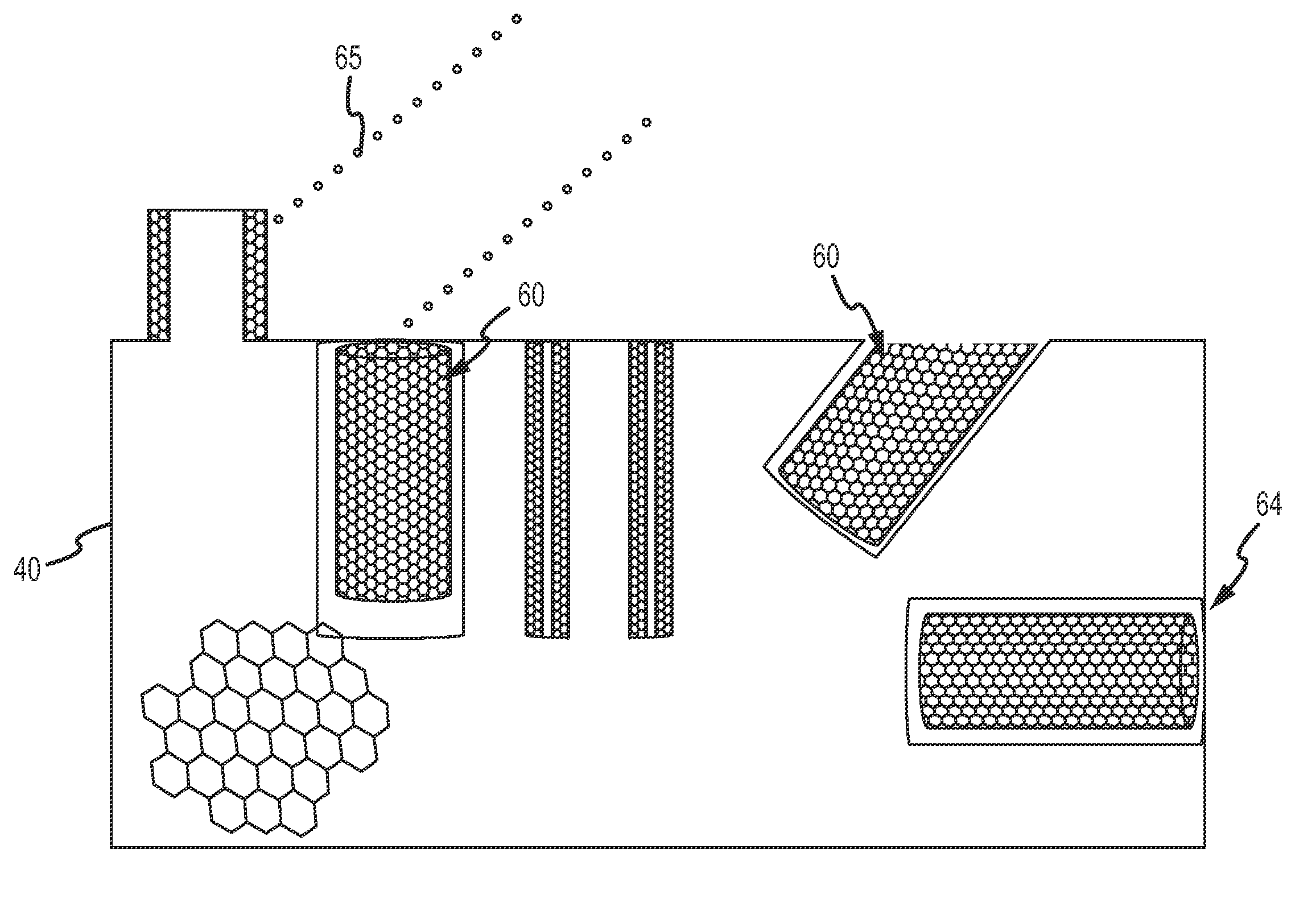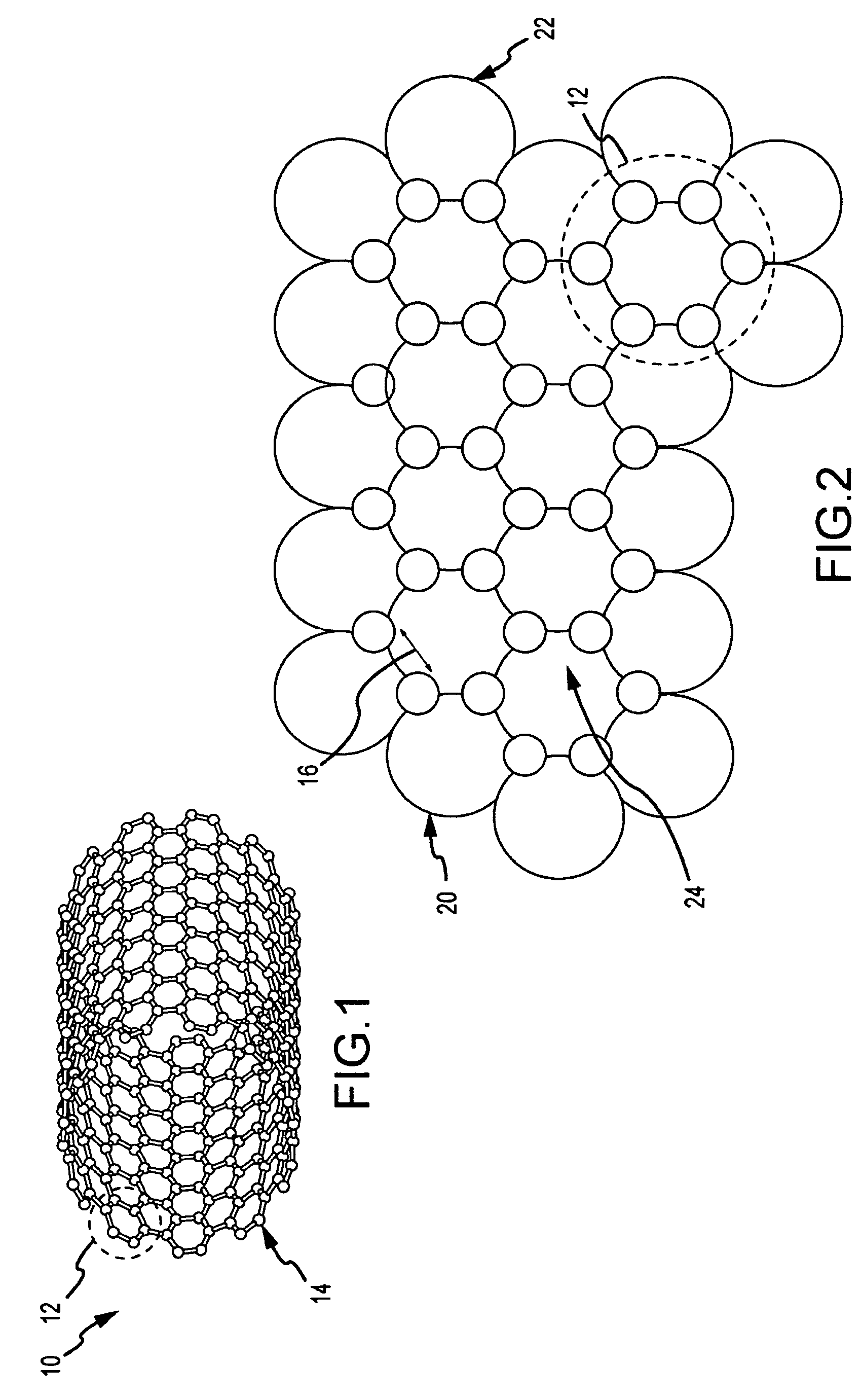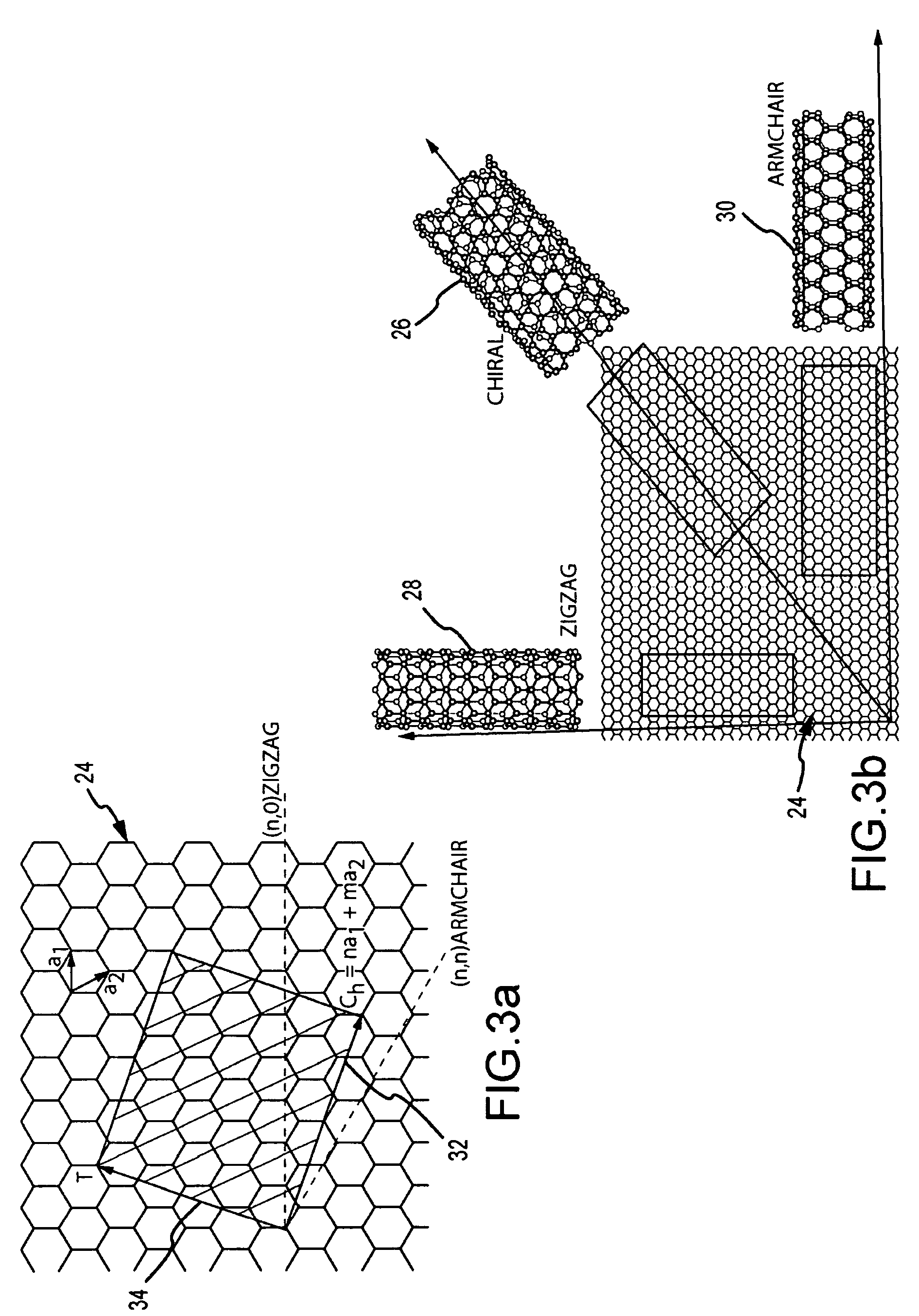Epitaxial growth and cloning of a precursor chiral nanotube
a chiral nanotube and epiaxial growth technology, applied in the direction of crystal growth process, polycrystalline material growth, condensed vapor, etc., can solve the problems of inability to precisely control, many hours of labor to sift through free nanotubes, and high cost of methods
- Summary
- Abstract
- Description
- Claims
- Application Information
AI Technical Summary
Benefits of technology
Problems solved by technology
Method used
Image
Examples
Embodiment Construction
The present invention provides a new method for growing and cloning precursor chiral nanotubes with a specified chirality. Arrays of nanotubes having the same and selected chirality may be grown saving considerable amounts of tedious labor and eliminating wasted material. Arrays of nanotubes having a selected mixture of certain chiralities can be grown. Arrays of precursor nanotubes having selected chiralities in a specified geometry in the crystal substrate can be grown. The method improves control over nanotube geometry, particular the desired diameter of the nanotube. The method may also be used to introduce other materials inside the nanotubes for applications such as drug delivery and can be used to produce hybrid nanotubes a portion of which are free and a portion of which are embedded in crystal for applications such as nanoelectronics.
This method involves forming cylindrical surfaces as voids in or as material projecting from an epitaxially-compatible crystal substrate havin...
PUM
| Property | Measurement | Unit |
|---|---|---|
| diameter | aaaaa | aaaaa |
| densities | aaaaa | aaaaa |
| elastic modulus | aaaaa | aaaaa |
Abstract
Description
Claims
Application Information
 Login to View More
Login to View More - R&D
- Intellectual Property
- Life Sciences
- Materials
- Tech Scout
- Unparalleled Data Quality
- Higher Quality Content
- 60% Fewer Hallucinations
Browse by: Latest US Patents, China's latest patents, Technical Efficacy Thesaurus, Application Domain, Technology Topic, Popular Technical Reports.
© 2025 PatSnap. All rights reserved.Legal|Privacy policy|Modern Slavery Act Transparency Statement|Sitemap|About US| Contact US: help@patsnap.com



